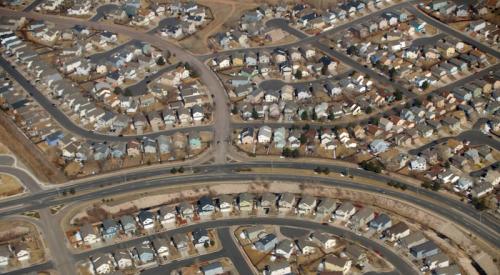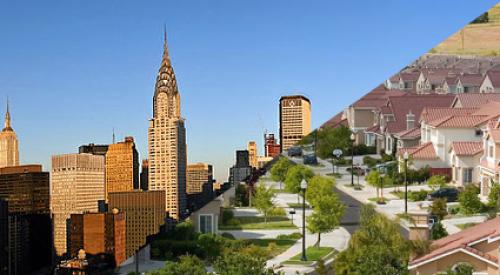Besides being a killer name for an 80s synth pop band, ‘urban revival’ is a term that has become as trendy and hip as the people who are behind this supposedly demographic-changing movement. And while the copious amount of studies and reports that have come out documenting the urban revival trend haven’t necessarily been outright wrong, they aren’t quite looking at the whole picture, either.
As Jed Kolko writes on his blog, while well-educated, higher-income young adults have become much more likely to live in urban neighborhoods, the overall trends still show the majority of Americans are moving to the suburbs.
From 2000 to 2014, the share of Americans living in urban neighborhoods dropped from 21.7 percent to 20.1 percent. When looking at the densest neighborhoods, the population still fell from 7.4 percent in 2000 to 7.0 percent in 2014.
So where does all this confusion come from? Part of the problem may be that it isn’t people that are urbanizing, but money. Between 2000 and 2014, urban neighborhoods, especially those of a higher density, grew richer. The higher-income households became more urban while the lowest income households found themselves 12 percent less likely to live in urban neighborhoods in 2014 compared to 2000. Additionally, they were 17 percent less likely to live in higher-density urban neighborhoods.
If you look at the opposite end of the spectrum at the richest tenth of households, those numbers flip and these households are 12 percent more likely to live in higher-density urban neighborhoods.
What appears to be the case is that the so-called urban revival is describing the migration patterns of people who are young, rich, childless, and white. But this once again comes with a caveat. Despite what you may think, it isn’t millennials that are leading the charge of the urban revival. Since 2000, individuals aged 35-39 years old are the only group that has become more urban. This age group was 2 percent more likely to live in urban neighborhoods and 9 percent more likely to live in high-density urban neighborhoods in 2014.
While a very specific demographic seems to prefer the city to the suburbs, the overall trends do not follow suit. There may be an urban revival of sorts, but end of the suburbs this is not.
For the full breakdown of all the statistics, click the link below.












